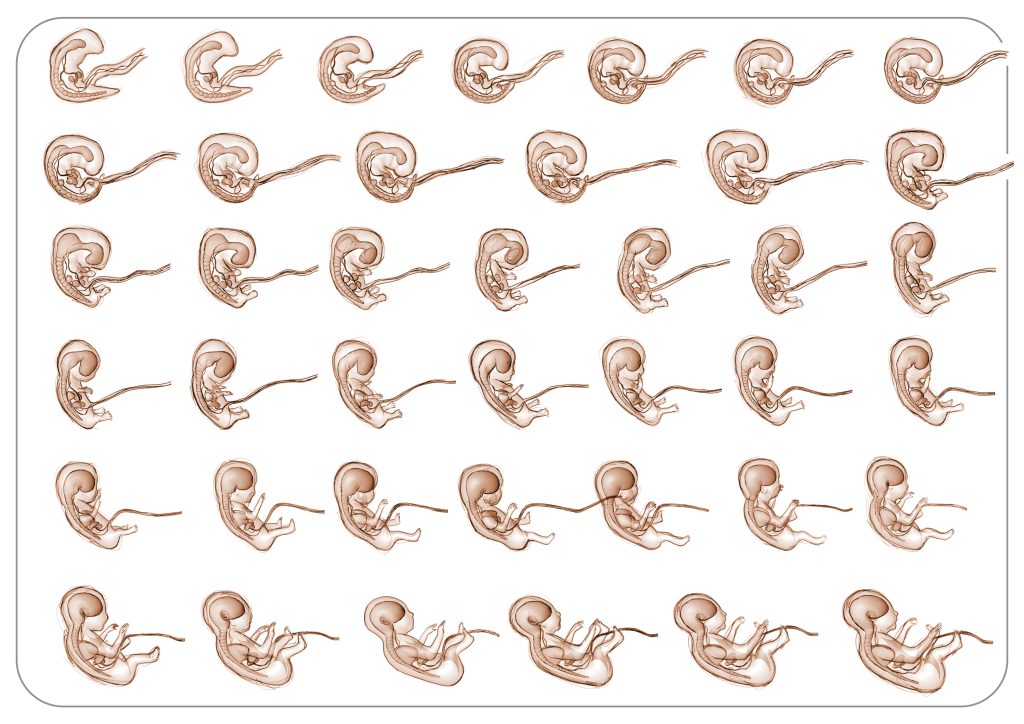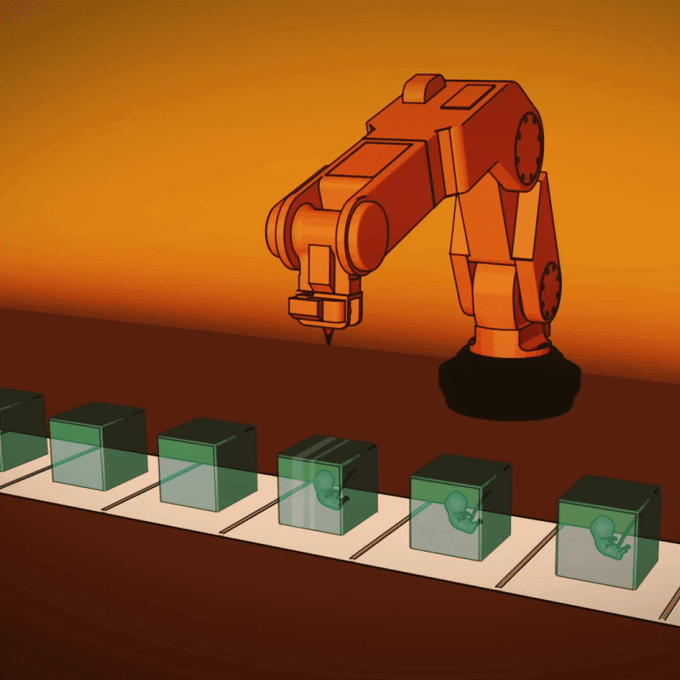Fetal Development
Scientific Visualization: Fetal Development in Laser-Etched Glass
“Earthling in a Sphere” is a scientific visualization project that presents the development of the human fetus across nine distinct stages of gestation. Each stage is represented by a precisely scaled 3D model, laser-etched into either a glass cube or sphere. Thanks to the high-resolution transparency of the material and the precision of laser technology, these objects reveal not only the external form of the fetus at each stage, but also internal anatomical structures such as bones and organs. The project invites tactile and visual engagement and serves both as a scientific teaching tool and as an aesthetic meditation on human growth and scale.
I was solely responsible for every aspect of the project. This included in-depth scientific research into fetal development and the definition of nine medically accurate developmental stages. Based on this data, I created detailed 3D models of each fetus, including skeletal systems and internal organs, and optimized these for laser etching in solid glass. I defined the technical parameters for production, ran test iterations, and supervised manufacturing. In addition, I developed a consistent visual and didactic language, created anatomical diagrams and infographics, designed packaging and labeling for each model, and scripted, filmed, and edited the campaign video. I also created and managed the entire Kickstarter campaign—from concept and storytelling to reward structure, visual assets, launch, and fulfillment.
The project was successfully relaunched and funded via Kickstarter, with strong resonance among educators, collectors, and science enthusiasts. It combines scientific accuracy with minimalist design and makes complex anatomical information physically and emotionally accessible.
Earthling in a Sphere
2021
Project Info
Cinema 4D
Redshift
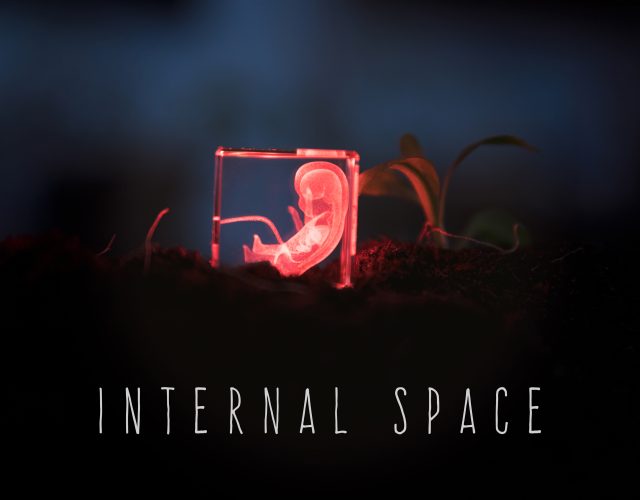

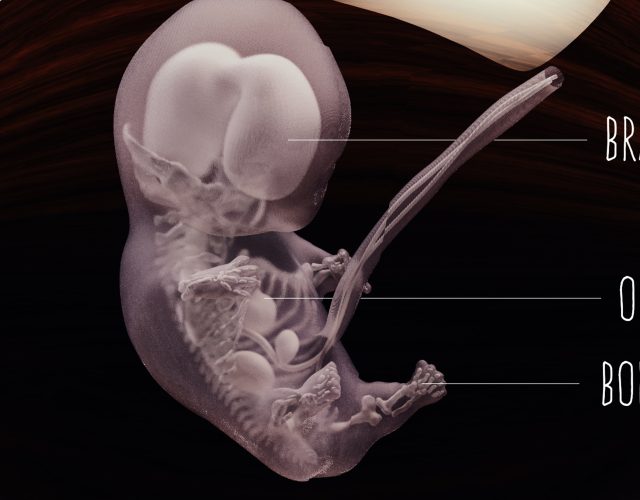
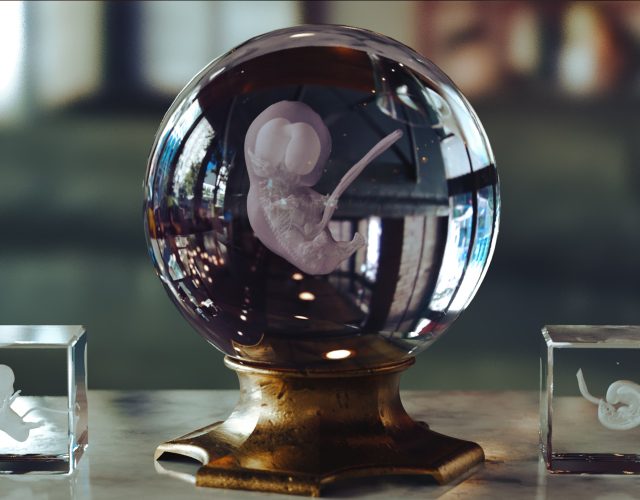
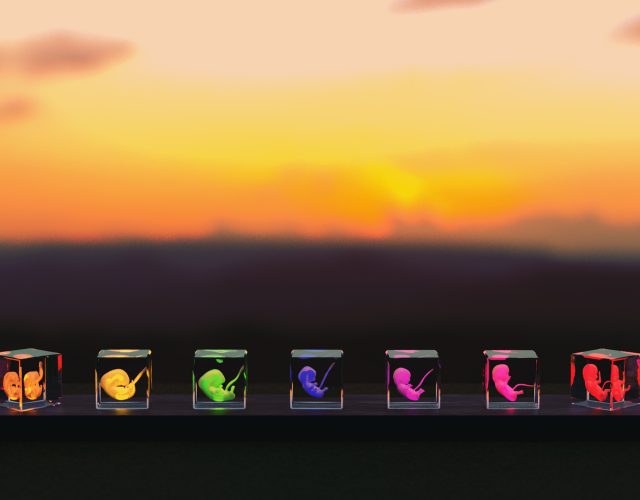
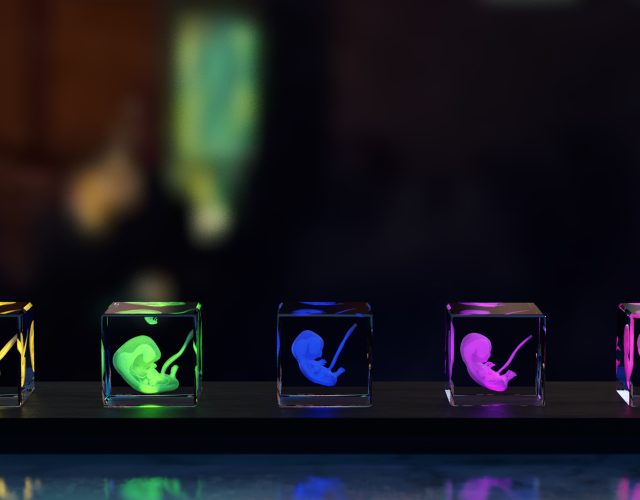
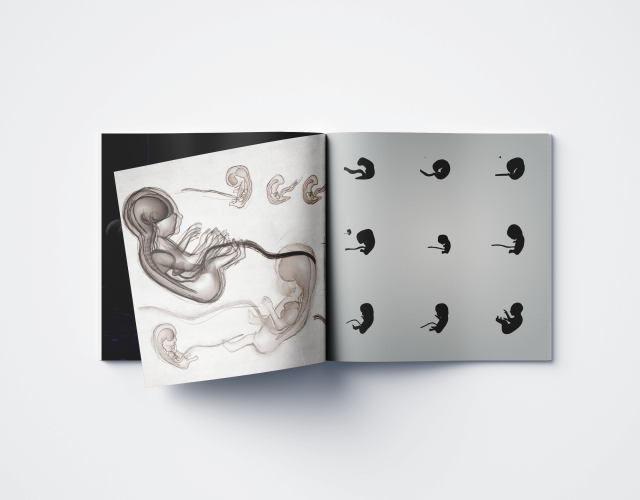
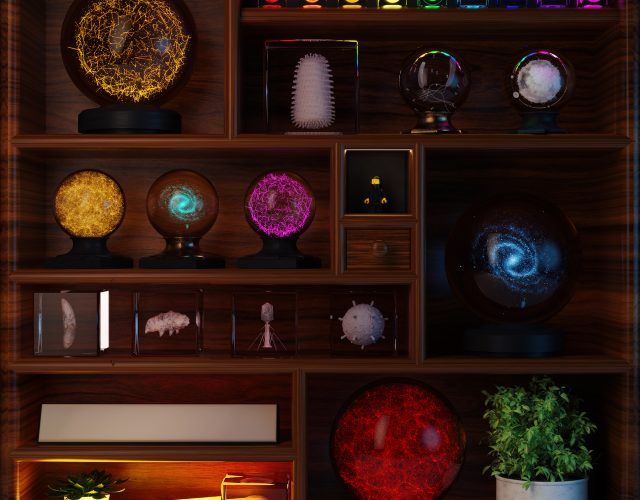
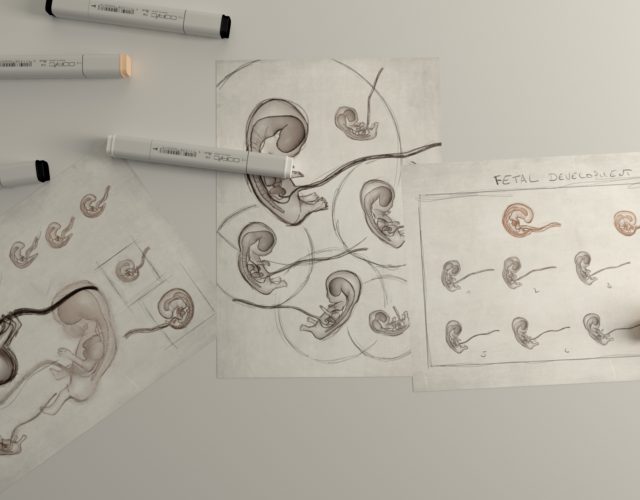
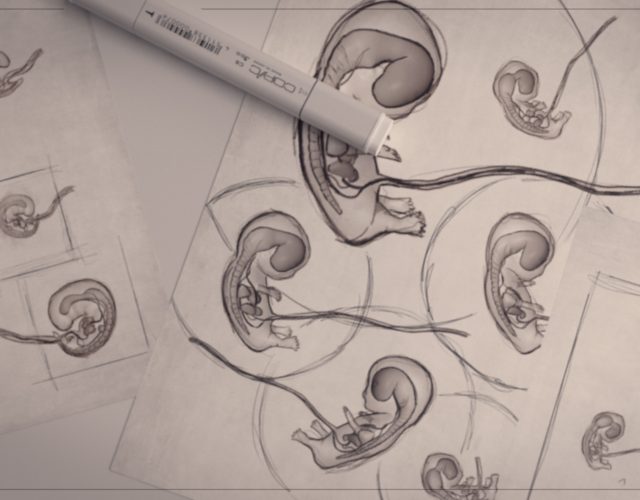
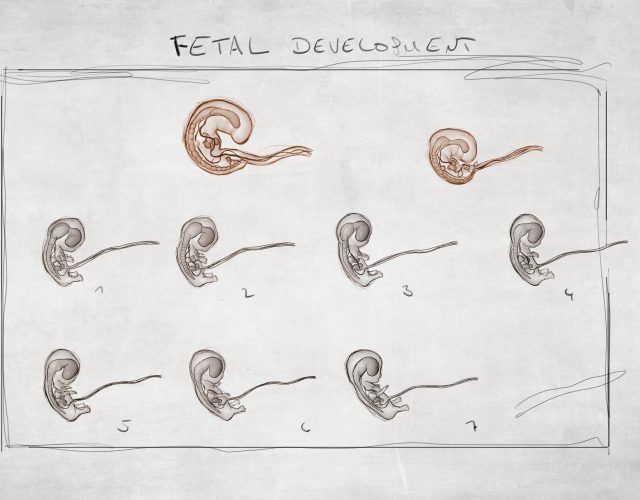
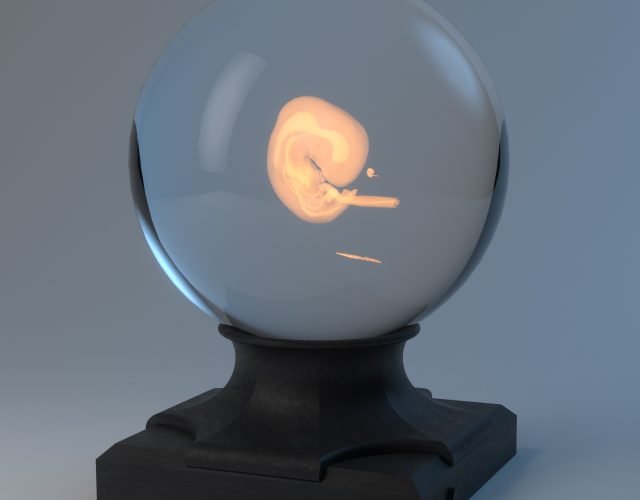
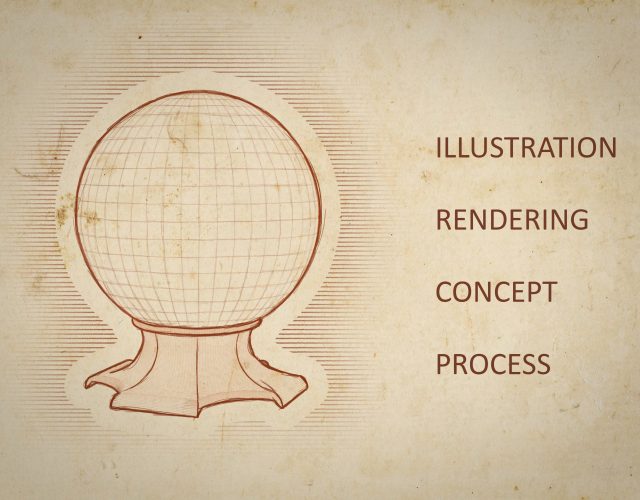
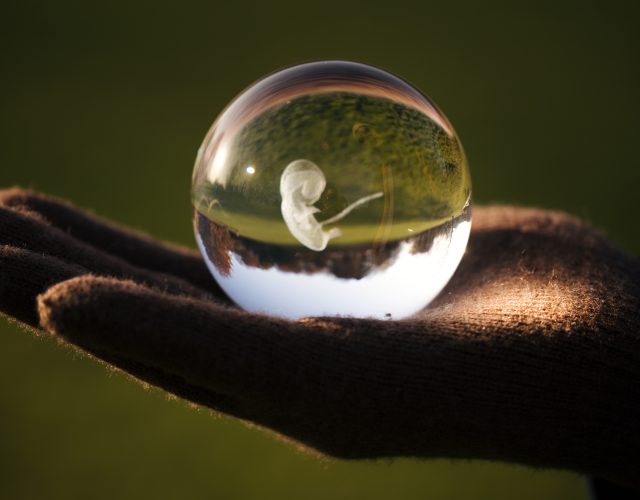
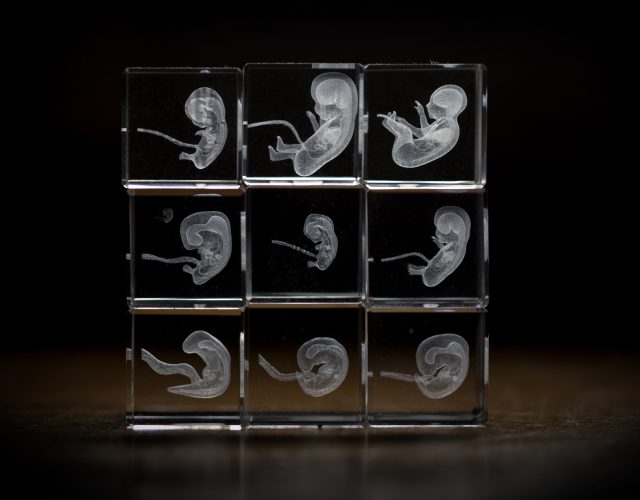
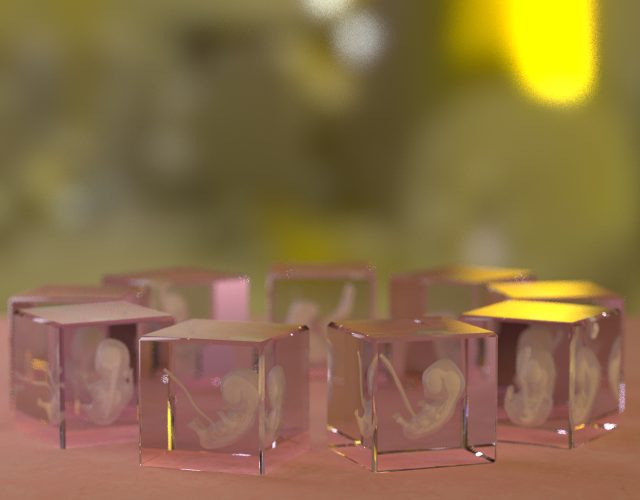
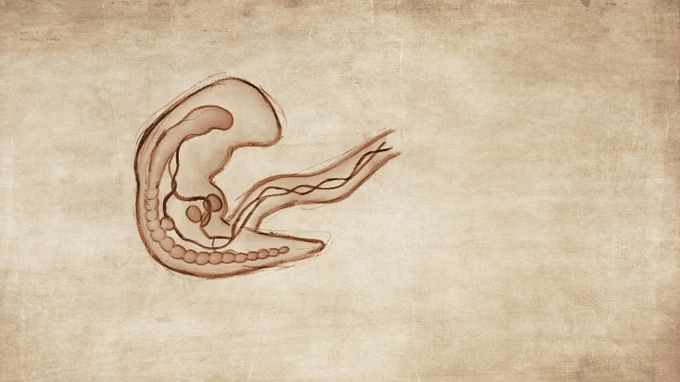
Product Renderings
To complement the physical models, I used the full-resolution 3D fetal datasets to create a series of photorealistic visualizations.
The rendered sequences were featured across the campaign and portfolio to communicate the project’s emotional and conceptual depth—bringing clarity, atmosphere, and presence to data that is otherwise invisible to the naked eye.
How Little We Know
Despite the fundamental nature of prenatal development, there is surprisingly little visual clarity available about the actual stages a human fetus undergoes before birth. Most people—even those with a general interest in science or medicine—have only vague or idealized mental images shaped by stylized illustrations or outdated textbook graphics. Detailed, anatomically accurate representations across multiple gestational stages are rare, often fragmented, and largely inaccessible outside of specialized contexts.
